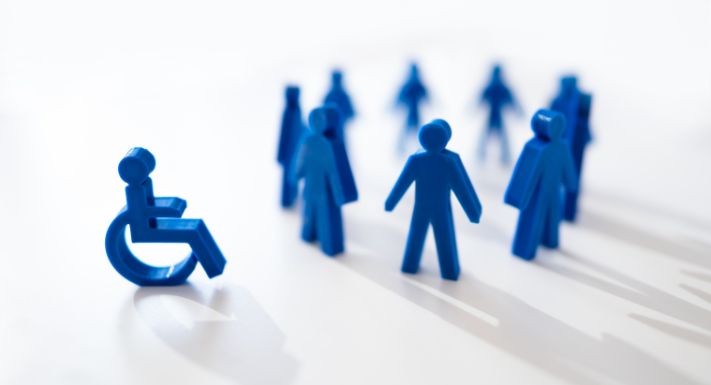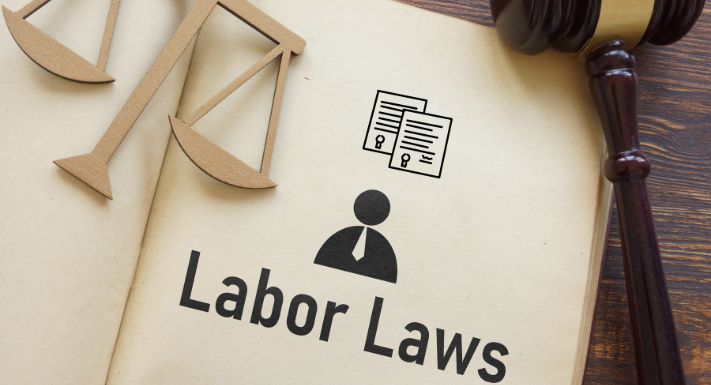
Your Rights if Treated by an Unlicensed Physician
May 3, 2024
Can You Sue an Anesthesiologist for Malpractice?
May 15, 2024Workplace discrimination against individuals with disabilities remains a pressing concern across the USA. This issue casts a long shadow on the principles of equality and fairness that form the bedrock of our professional environments. Let’s examine the stark realities faced by workers with disabilities through a closer look at recent statistics.
The numbers offer a sobering glimpse into the challenges these individuals confront daily. From recruitment processes riddled with bias to disparities in pay and lack of proper accommodations, the hurdles are manifold. However, understanding the magnitude of this issue is the first step towards catalyzing change.
Our exploration goes beyond mere numbers; it’s an invitation to empathize with the lived experiences of countless individuals striving for dignity and equal opportunity in their careers. Together, we can turn the tide against workplace disability discrimination, ensuring that every individual has the chance to thrive on their merits, free from prejudice.
Understanding Workplace Disability Discrimination
Disability discrimination in the workplace involves unfair treatment of employees based on disabilities. This encompasses everything from hiring to promotions and access to benefits, often manifesting through failure to provide reasonable accommodations. These accommodations are adjustments or modifications that enable employees with disabilities to work effectively, such as flexible hours, accessible environments, or specialized equipment.
The Americans with Disabilities Act (ADA) and the Rehabilitation Act serve as protective legal frameworks. They require employers to support qualifying employees unless doing so causes significant difficulty or expense to the business. Despite these protections, discrimination takes various forms.
- Direct discrimination: Treating someone unfavorably because of their disability
- Indirect discrimination: Policies that apply to all but disadvantage those with disabilities
- Failure to accommodate: Refusing necessary adjustments to support someone’s disability
- Harassment: Creating a hostile atmosphere for individuals with disabilities
- Victimization: Punishing employees for complaining about discrimination
The impacts extend beyond legal violations; they affect morale, productivity, and mental health, leading to job dissatisfaction and potentially driving talented individuals out of the workforce. Understanding these facets is essential for addressing and preventing workplace disability discrimination effectively.
Prevalence of Discrimination Claims
The Equal Employment Opportunity Commission (EEOC) annually reports thousands of discrimination claims, many of them based on disability. In 2023, disability discrimination lawsuits made up 34.3 percent of the total lawsuits the EEOC filed.
This figure, while substantial, likely underrepresents the true prevalence of workplace discrimination against individuals with disabilities. Many affected employees may choose not to file complaints due to fears of retaliation, unfamiliarity with legal rights, or skepticism about the effectiveness of formal complaints in instigating change. This discrepancy between reported cases and actual instances suggests a pervasive issue, with many employees silently facing discriminatory practices.
Employment Rate Disparity
Statistical analyses have consistently highlighted a stark employment rate disparity between individuals with and without disabilities. This gap is not merely a reflection of abilities but suggests systemic barriers, including discriminatory hiring practices.
Employers’ misconceptions about the capabilities of persons with disabilities or overestimated costs associated with necessary workplace accommodations contribute significantly to this employment gap. Furthermore, this disparity underlines the need for enhanced education and awareness among employers regarding the potential contributions of disabled employees and the often minimal nature of accommodation costs.
Wage Inequality
Even when accounting for variables such as education level, years of experience, and job type, a significant wage gap persists between workers with disabilities and their nondisabled peers. This disparity points to direct forms of discrimination and indicates a broader trend of individuals with disabilities being disproportionately represented in lower-wage positions and sectors.
This inequality affects the economic well-being of individuals with disabilities and reflects broader societal valuations of their labor. If you’re an Idahoan with a disability and are not being paid fairly in comparison to your nondisabled colleagues, a disability attorney in Boise, Idaho, can help you seek compensation.
Insufficient Workplace Accommodations
A considerable portion of disabled workers report not receiving necessary adjustments or accommodations at work that are critical for their effective job performance. The reluctance of some employers to provide accommodations, often citing cost concerns, constitutes a form of discrimination.
However, research indicates that the majority of such accommodations are low-cost, with significant portions of them requiring no expenditure at all. Beyond financial implications, the provision of accommodations can lead to positive outcomes such as enhanced productivity, improved employee morale, and reduced turnover rates.
Harassment and Hostile Work Environment
Individuals with disabilities frequently encounter harassment and bullying at higher rates within workplace settings compared to their nondisabled counterparts. These hostile behaviors can exacerbate existing inequalities and result in severe psychological impacts, including stress, anxiety, and decreased job satisfaction.
Cultivating an inclusive and respectful work culture is an essential part of combatting these toxic behaviors. Employers should emphasize and enforce anti-harassment policies while promoting diversity and inclusion training.
Challenges in Reporting and Resolution
The pathway from experiencing discrimination to successfully resolving a complaint is fraught with challenges—which contributes to a high rate of underreporting. Fear of job loss, skepticism about complaint resolution processes, and lack of faith in systemic change dissuade many from reporting their experiences.
Among those who do report, only a fraction see their complaints substantiated by institutions like the EEOC. This scenario underscores a critical need for more effective protection mechanisms, enforcement of existing laws, and supportive environments that encourage individuals to report discrimination without fear of retribution.
What To Take Away From These Statistics
As we reflect on the statistics and stories behind workplace disability discrimination in the USA, we see that numbers alone cannot capture the full human experience. Behind each statistic is a person striving for respect, equality, and the opportunity to contribute their talents to our society. This discussion serves as a stark reminder that despite progress the made, we are still far from the inclusive workplace environment that everyone deserves.
The conversation around workplace disability discrimination must evolve from mere acknowledgment of its existence to proactive strategies for change. It’s necessary to create spaces where employees feel valued, heard, and supported, regardless of disability. Companies and organizations across sectors must lead by example, implementing policies that go beyond compliance to cultivate a culture of genuine inclusivity and diversity.
Empathy, understanding, and commitment to change are the cornerstones upon which we can build a more equitable workplace landscape. By prioritizing accessibility, fostering open dialogues about disabilities, and recognizing the unique contributions of every employee, businesses can unlock a level of innovation, loyalty, and productivity previously untapped.






